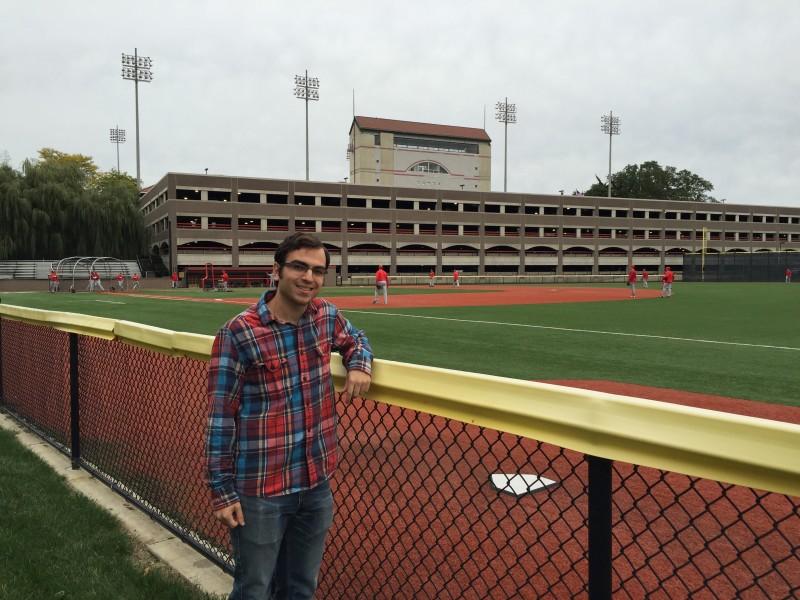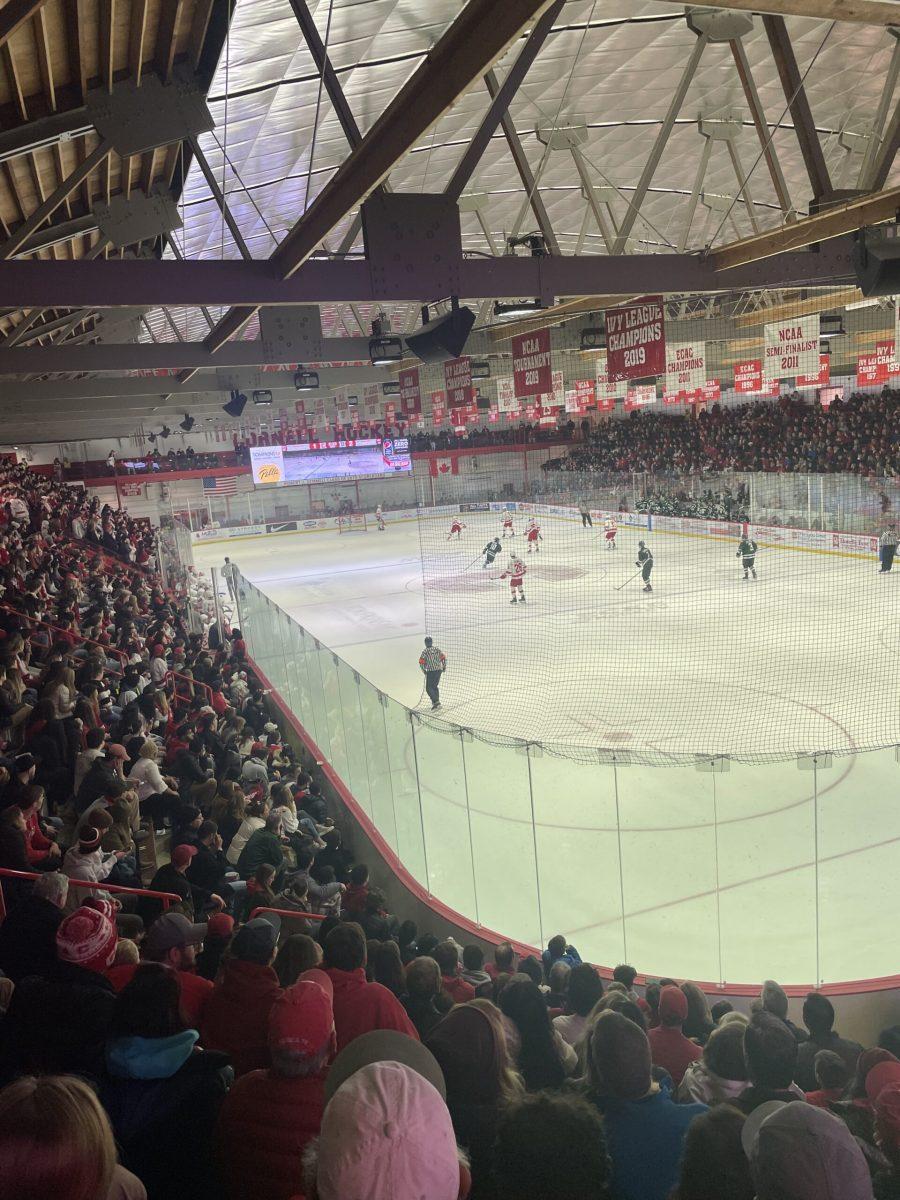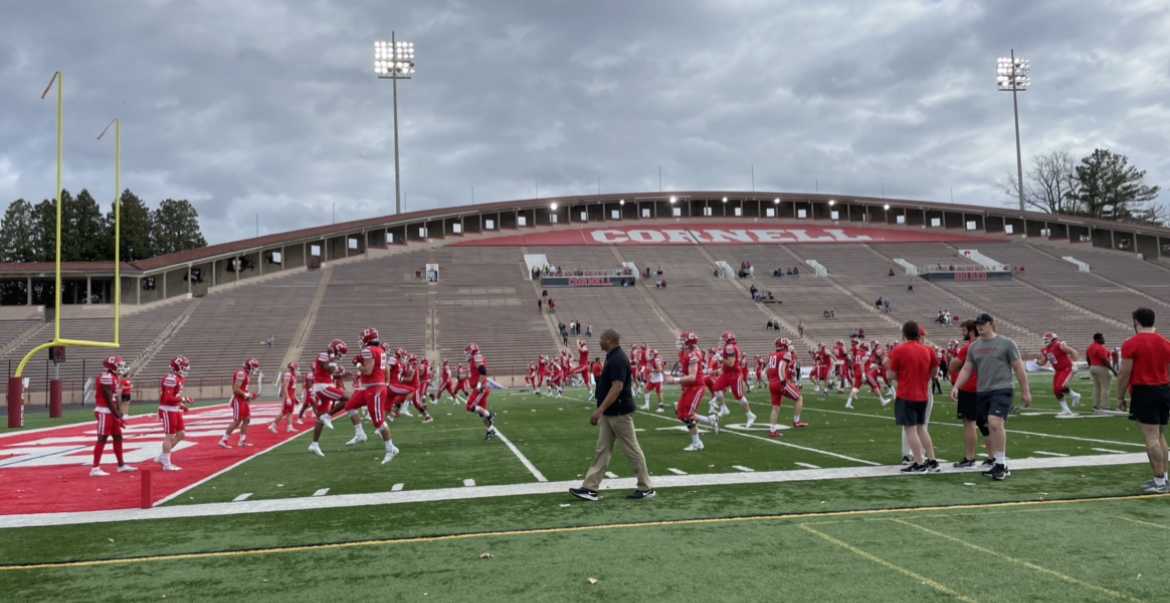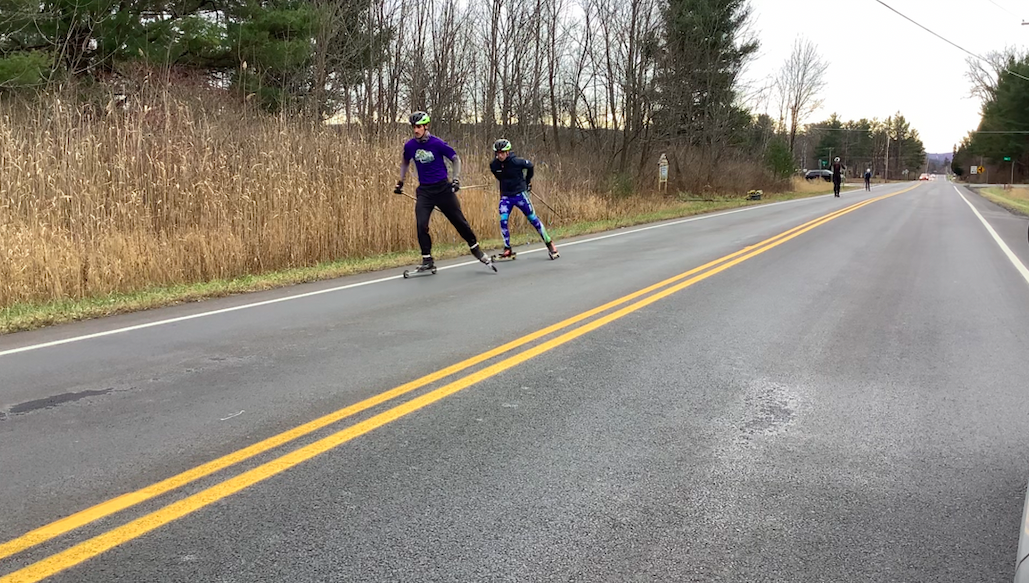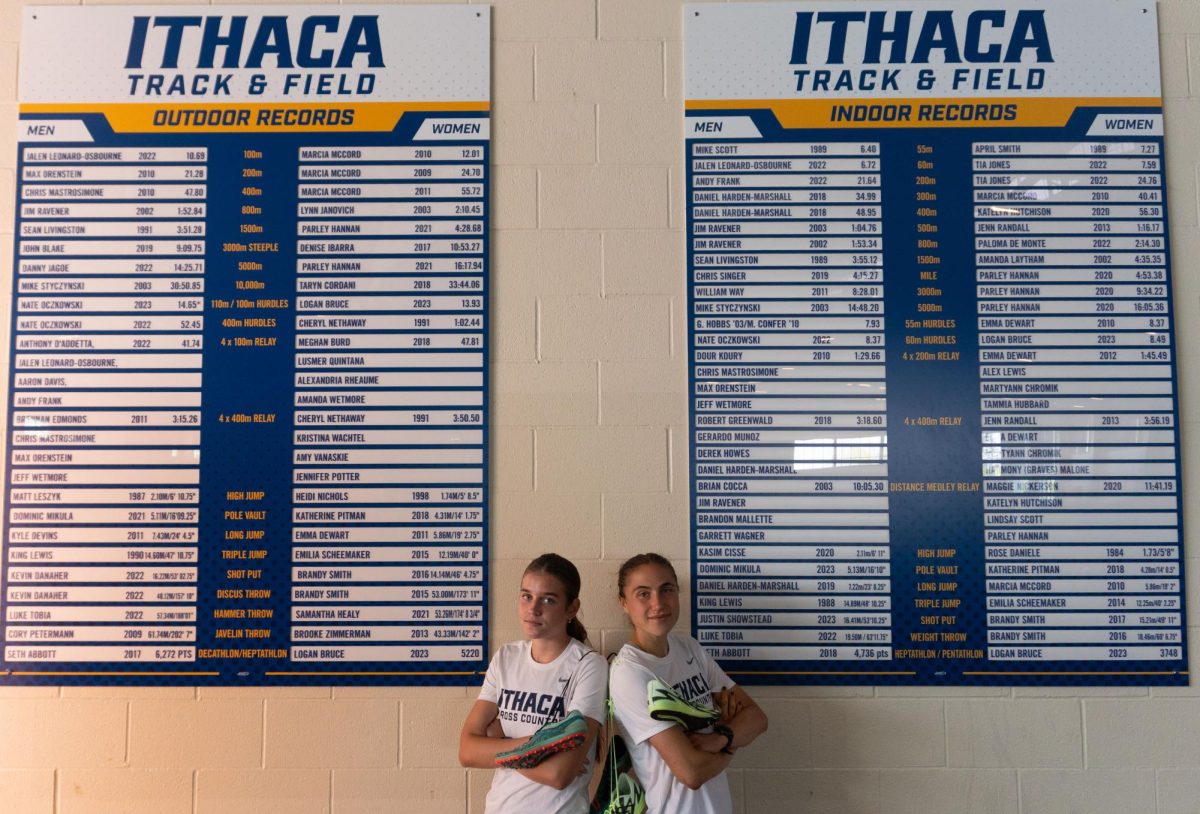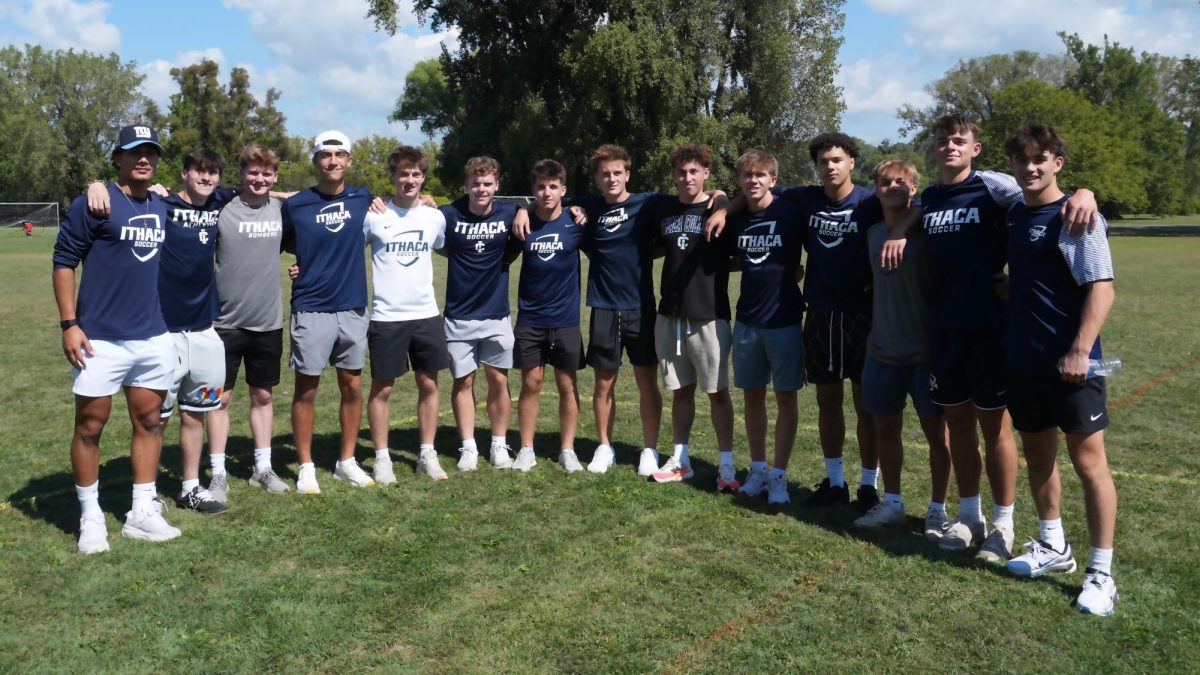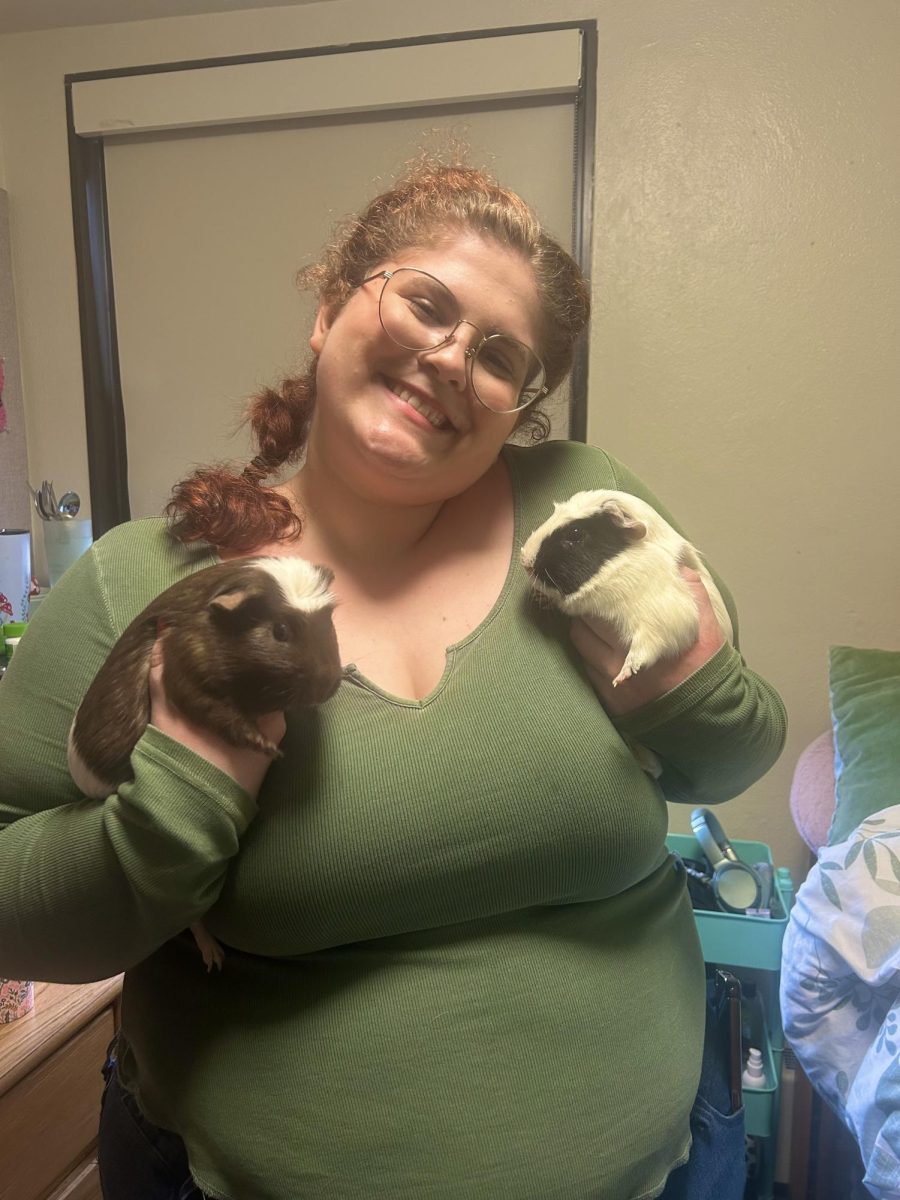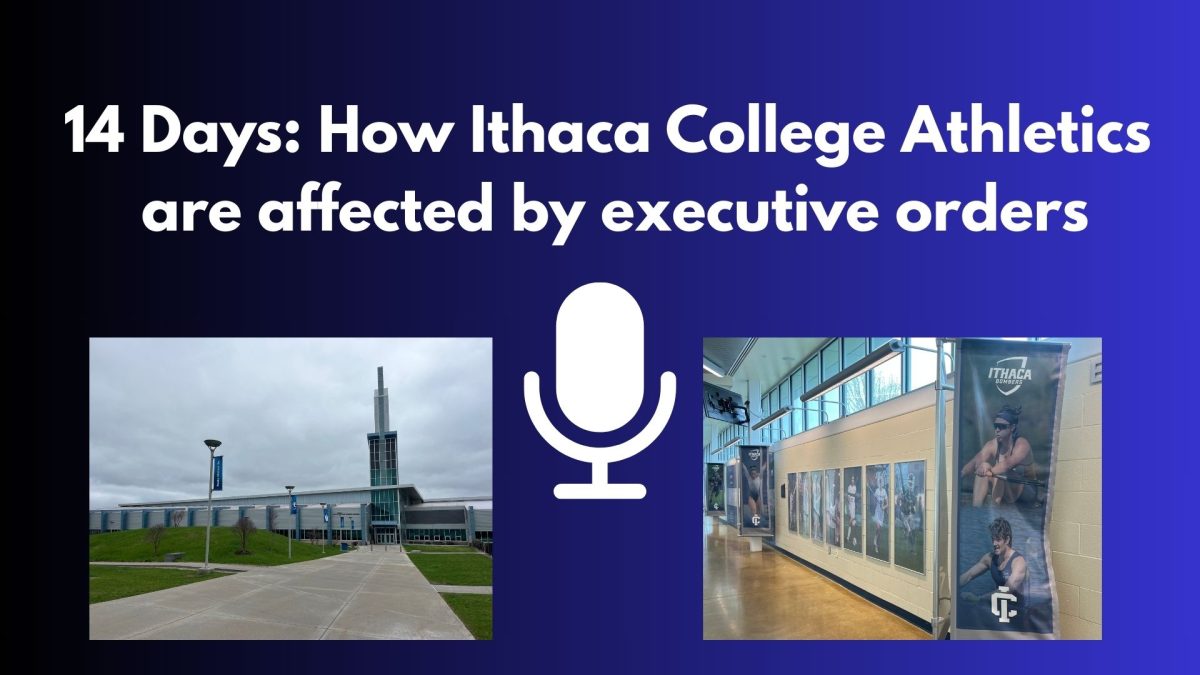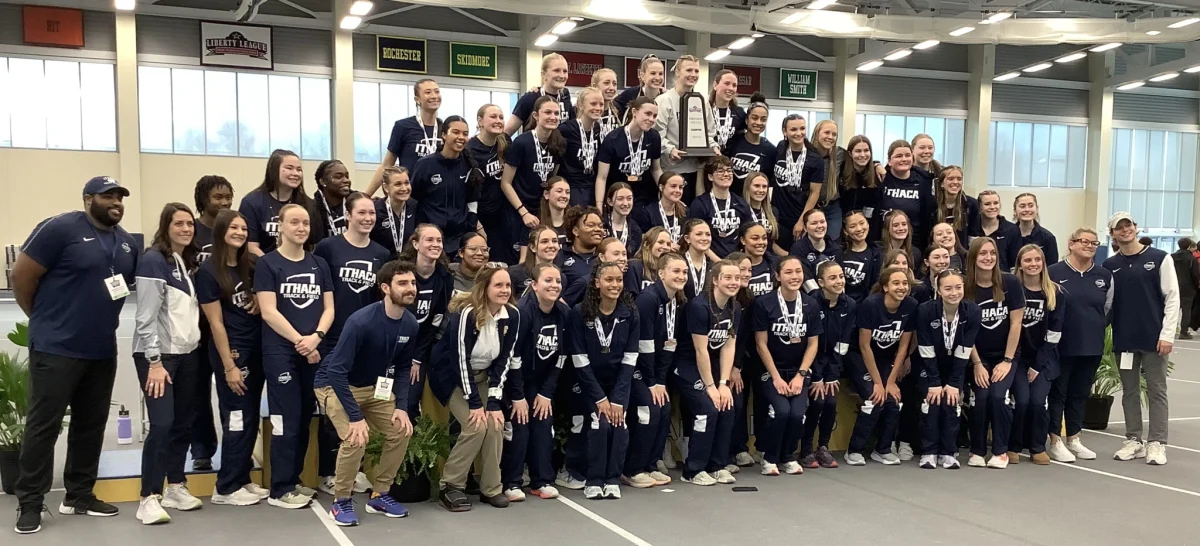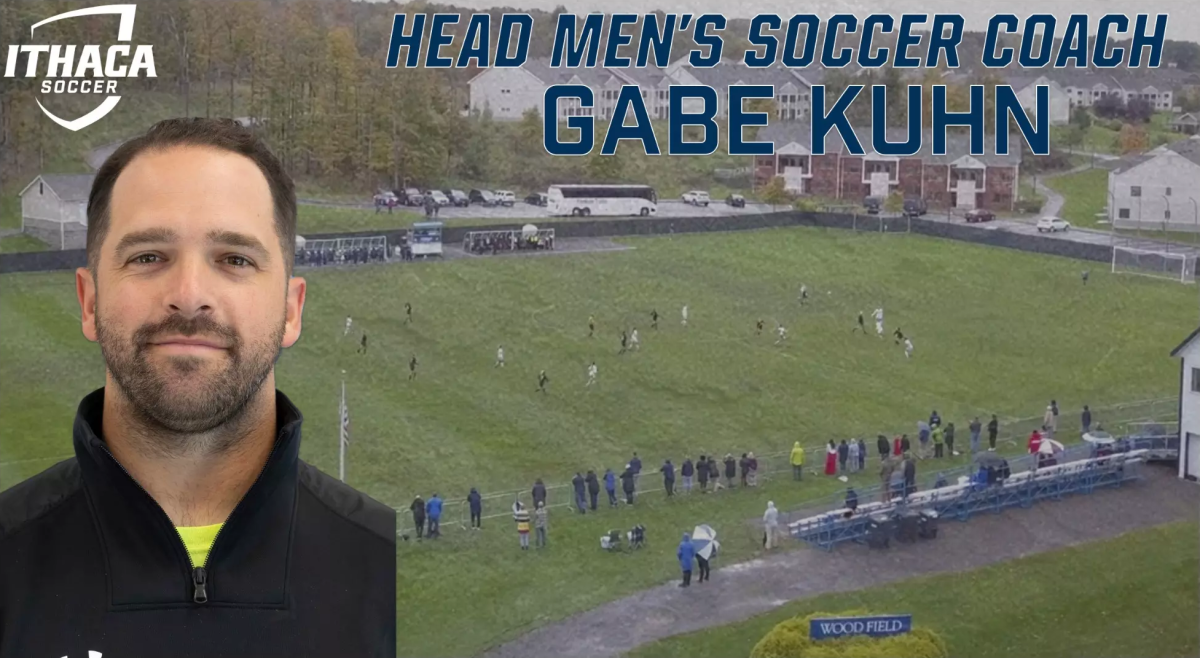Alex Gimenez noticed one day that no one was broadcasting the Cornell University baseball games, so he jumped on it. Jesse Sherman soon joined him and a few short years later, the Big Red Sports Network was launched.
Co-founders Sherman and Gimenez launched the Big Red Sports Network in Fall 2013 after they had success with their first creation, Cornell At Bat. According to Gimenez, it “was an organization that we created to provide in depth coverage of the Cornell baseball team for parents and alumni.”
After working with the baseball team, the pair decided to expand to all Big Red sports, and now you can find BRSN covering all things Cornell athletics, from squash to hockey. The transition during the expansion was not seamless.
“I’d be lying if I said we had a perfect strategy from day one,” said Gimenez. “The downside to that was a lot of growing pains in our first year, but it forced us to build the network from the ground up and it allowed us to think innovatively and try a lot of new things in the way we presented Cornell athletics.”
Being fresh and new has driven BRSN and some of their content, as an article on the Cornell men’s hockey team’s lacking attendance numbers was written on their site as a plea to the fans. That type of opinionated article could not be published on the Cornell athletic website.
“We wanted to go a step further than just game recaps,” said current BRSN president Matt Provenzano. “We have a mutual benefit in that athletes seek us out if they want a story to be told.”
Provenzano also explained how BRSN benefits from being a student run operation, because they can find athletes on campus and coordinate stories. Unlike other outlets, which would have to go through official mediums to gain their access.
In being the so-called “new kids in town” it can be difficult to gain the same type of access to players and coaches and also have the same levels of respect as professional media personalities. Multiple factors have kept that from being a problem for BRSN.
“It was easy getting the same type of access,” Provenzano said. “In most cases at Cornell, there are no professional media outlets covering the sport, so we can just send out an email and then we go.”
In terms of respect, Gimenez never thought that it would be an issue gaining the respect of their peers; all the responsibility was on their end.
“We knew we’d be respected by the local media landscape as well as Cornell’s athletic administration, athletes and coaches if we were professional in the way we handled ourselves,” said Gimenez. “As a new organization we needed to establish trust and build a reputation through positive encounters with all involved in the process and I think because we went about things the right way from day one, we never really struggled in being respected.”
Cornell men’s hockey radio play-by-play announcer Jason Weinstein shot down the notion of students not getting respect just because they do not get paid to cover Big Red athletics.
“Gaining respect is about the job you do and how you approach it,” said Weinstein. “Being a student or not has nothing to do with it…I can also think of some pretty amateurish stuff ‘professionals’ do.
BRSN and Weinstein both broadcast home games for the Cornell men’s hockey team, with Weinstein broadcasting on local radio station WHCU through Cornell Sports Marketing. On the women’s side, BRSN holds the broadcast rights to the hockey games, as well as baseball, women’s soccer and men’s soccer on the East Hill.
With Gimenez and Sherman now done with their undergraduate studies and Sherman enrolled in law school at Cornell, those types of assets will help keep BRSN running, and Provenzano is not worried about sustaining the network over the next five years and foresees success.
The consistency of the network has helped former workers in professional fields, as Gimenez is currently starting a job in baseball operations for the Boston Red Sox of the MLB with his experience from the BRSN as well as his work with the MLB league office helping him get the spot.
Gimenez also believes that BRSN has the base to sustain a long-term product.
“All of the logistical pieces that come into play in running an organization like this are in place to allow us to increase our coverage across the board,” Gimenez said.

